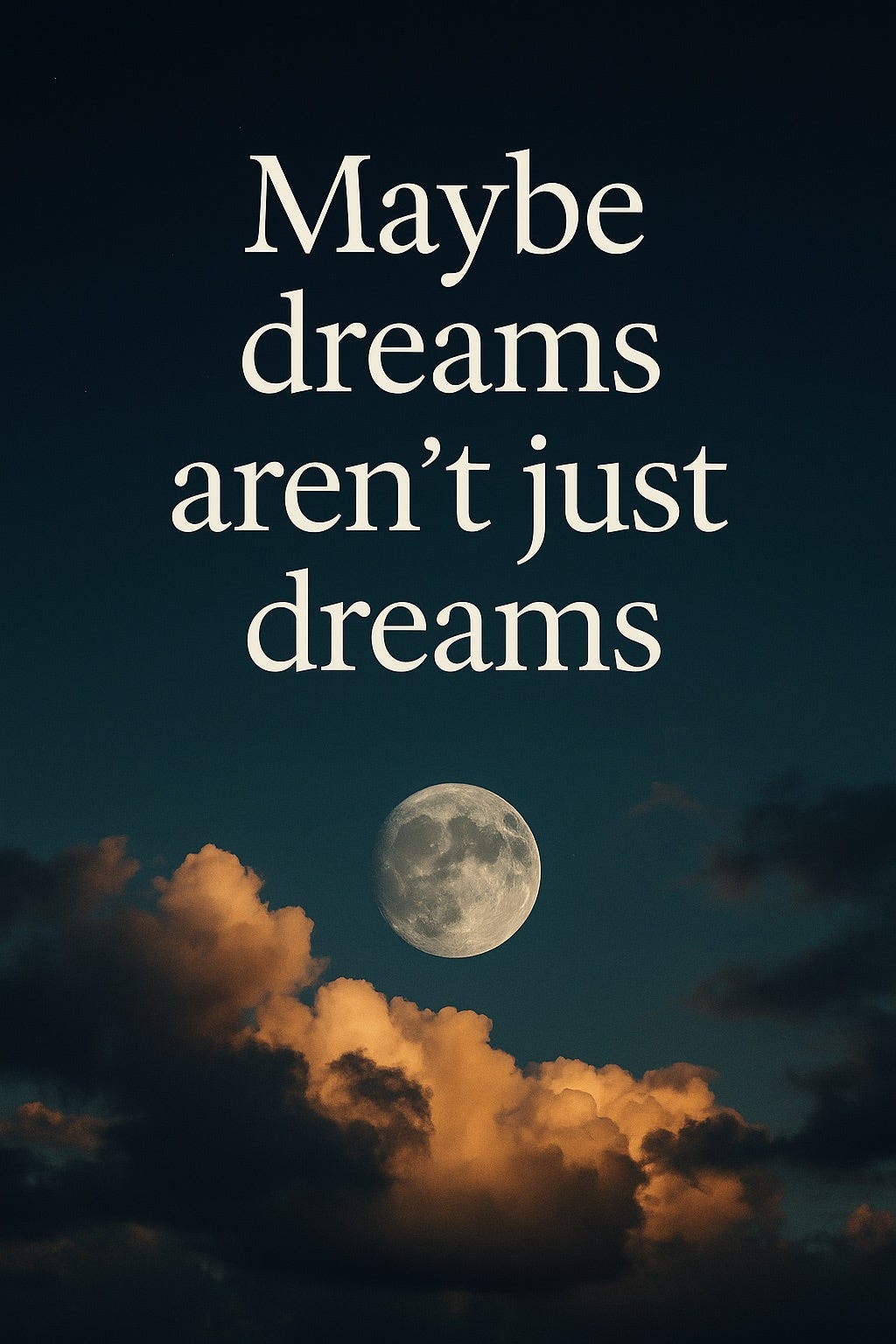🌀 Maybe Dreams Aren’t Just Dreams
A strange thought found its way to me recently. One of those lines that just sticks in your head, like a familiar tune you can’t place.
“Maybe, just maybe… dreams are not just neural activity.”
Now, we’ve all heard the standard explanation: that dreams are the brain’s way of sorting out the day — clearing up emotional clutter, replaying memories, stitching together bits and pieces of what we saw, heard, or feared.
Neuroscience has mapped the REM cycle, explained synaptic pruning, and tracked eye movements in labs. We know how we dream.
But still… that “maybe” lingers.
What if dreams aren’t just internal admin work? What if they’re something more?
Dreams That Feel Like They Belong to Another Life
I’ve had dreams that vanish by breakfast, and others that stay with me for years. The kind that leave you waking up with a strange sense of nostalgia — not for a person or a place you know, but for something that feels like it should have been part of your life.
Ever experienced that?
It’s not déjà vu. It’s deeper. Like your subconscious wandered off somewhere while you slept — not to rehash your past, but to explore a version of your life playing out elsewhere.
Parallel Lives? Stay With Me.
This isn’t about believing in science fiction or getting mystical. But it is about considering possibilities — especially the ones that science is slowly catching up to.
Quantum theory already allows for the existence of multiple universes, each running slightly different versions of reality depending on the choices made (or not made). So if that’s the case… is it really that far-fetched to think that dreams might be crossover points? Glitches in the boundary between timelines?
That version of you who moved to another city. Took a different job. Married someone else. That life still exists — somewhere.
And when you dream, maybe you’re not inventing. Maybe you’re visiting.
What Ancient India Always Knew
Long before multiverse theory hit TED Talks, Hindu philosophy was already way ahead of us.
In the Mandukya Upanishad, human experience is described through four states of consciousness:
Jagrat (waking)
Swapna (dreaming)
Sushupti (deep sleep)
Turiya (pure awareness)
Swapna — the dream state — isn’t seen as a second-class experience. It’s a realm of its own, where the soul continues to experience reality, just through a different filter. In fact, some sages believed the dream world revealed more truth than waking life ever could, because it wasn’t masked by logic, fear, or ego.
In our myths, dreams weren’t passive. They were doorways. Lord Vishnu, for instance, dreams entire universes into existence. In the Mahabharata, dreams are messages, omens, sometimes even battlegrounds.
It makes you wonder — have we over-simplified something ancient cultures always treated with more reverence?
A Thought Experiment for Tonight
You don’t need to believe any of this. That’s not the point. But if you’re even a little curious, try this:
Before you sleep, tell yourself:
“If there’s another version of me out there, I’m open to seeing a glimpse.”
Then just notice what shows up.
Keep a notebook by your bed. Write down whatever fragments you remember. Don’t analyze. Don’t try to make meaning. Just pay attention.
The Power of Maybe
That’s really the point here. This post isn’t making claims. It’s not pushing a belief system. It’s sitting in that space that science and spirituality both find uncomfortable: the unknown.
“Maybe dreams are more than dreams.”
Deepanjan



